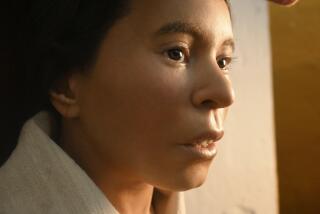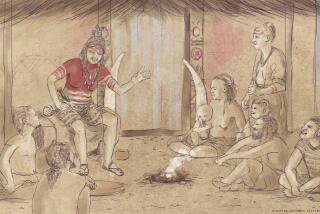QUICK TAKES - April 1, 2009
- Share via
Researchers in Germany have used a modern medical procedure to uncover a secret within one of ancient Egypt’s most treasured artworks: The bust of Nefertiti has two faces.
A team led by Dr. Alexander Huppertz, director of the Imaging Science Institute at Berlin’s Charite hospital and medical school, discovered a detailed stone carving that differs from the external stucco face when they performed a computed tomography, or CT, scan on the bust.
The findings, published Tuesday in the monthly journal Radiology, are the first to show that the stone core of the statue is a highly detailed sculpture of the queen, Huppertz said.
“Until we did this scan, how deep the stucco was and whether a second face was underneath it was unknown,” he said. “The hypothesis was that the stone underneath was just a support.”
The differences between the faces, though slight -- creases at the corners of the mouth, a bump on the nose of the stone version -- suggest to Huppertz that someone expressly ordered the adjustments between stone and stucco when royal sculptors immortalized the wife of Pharaoh Akhenaten 3,300 years ago.
John H. Taylor, a curator for Ancient Egypt and Sudan at the British Museum in London, said the scan raised interesting questions about why the features were adjusted -- but that answers would probably remain elusive.
More to Read
Sign up for Essential California
The most important California stories and recommendations in your inbox every morning.
You may occasionally receive promotional content from the Los Angeles Times.













